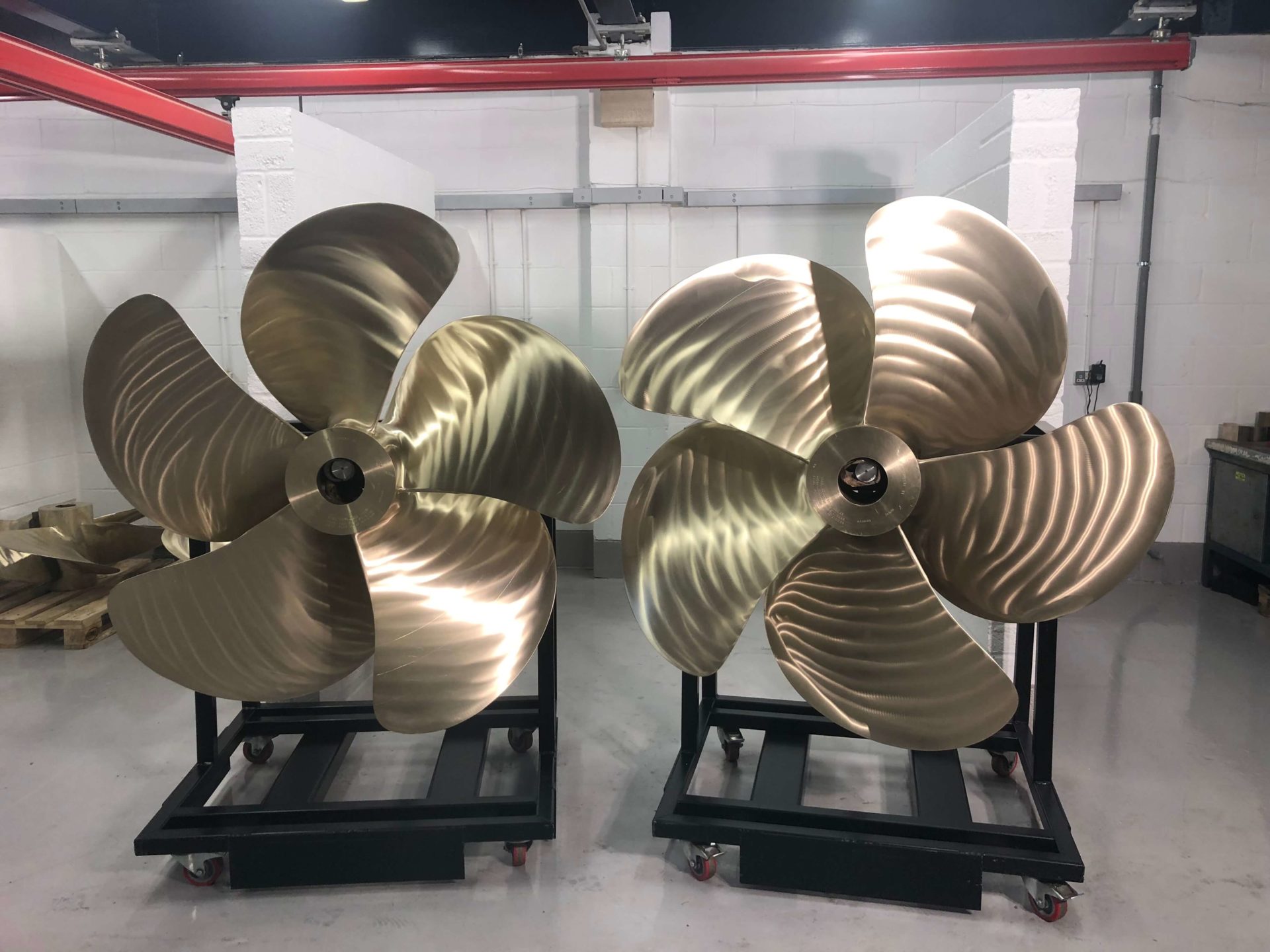CJR propulsion has 80 years of experience in the marine manufacturing industry and we like to think that in that time we have become propeller experts. We are also forward-thinking and innovative manufacturer blazing trails in optimising the speed and quality of our outputs.
Despite all this, we still believe that there is no progress without a robust understanding of where we have been, so read on for a historical adventure through two millennia of propeller development.
What are propellers?
The purpose of a propeller is to use thrust to push an object forward (whether that be through air or water) by pushing backwards. Propellers are sometimes colloquially referred to as ‘screws’, and that’s because at a basic level, they are the same thing. Like a screw is pushed into a wall by a helical thread turning clockwise, a propeller has radiating blades coming away from a central rotating base which are pitched at an angle which dictates how quickly it moves when you turn it.
200 BC – 1500 AD: First iterations
The first iterations of what can be recognised as an early ‘propeller’ occur around two millennia ago with Archimedes’ Screw (est. 200 BC) which was used for irrigation. It was a hollow segmented water wheel used by the egyptians to draw water upwards using a spiral movement.
Other early examples of large screws being used for movement of objects include the ‘bamboo-copter’, also known as the ‘bamboo dragonfly’ or ‘Chinese top’ (est 320 AD) and the large canvas screw included in Leonardo Di Vinci’s theoretical helicopter.
1600 – 1775: The first uses of ‘screws’ in water
In the early modern period, a few pioneering inventors first suggested the use of ‘screws’ partially or fully submerged in water. In 1683, Robert Hooke modified his horizontal watermill design to provide motive power for ships through water and in 1752 the Academie des Sciences in Paris granted a prize for a design of a propeller-wheel. At about the same time, the French mathematician Alexis-Jean-Pierre Paucton suggested a water propulsion system based on the Archimedean screw.
1775 – 1830: Slowly but surely…
The early nineteenth century brought several successful, if slow, attempts at using propellers to power marine vessels. For example: Edward Shorter’s propeller-powered transport ship, ‘Doncaster’ achieved speeds of 1.5 mph in 1800; John Stevens 25 foot vessel with a four blade propeller reached 4 mph in 1802; and in 1827, John Patch oversaw the first successful Archimedes screw-propelled ship.
1830s: Propeller-power explodes
Approaching the mid nineteenth century, two inventors in Britain, John Ericson and Francis Pettit Smith, took out screw propeller patents. Smith’s 30-foot, 6 ton, 6-horsepower canal boat called Francis Smith was fitted with his wooden propeller. He demonstrated it on the Paddington Canal from November 1836 to September 1837 and by accident discovered that single turn propellers were quicker though this process. Ericsson 45 foot screw-propelled steamboat reached 10 miles per hour when demonstrated on the Thames and then his second larger screw-propelled boat, the Robert F. Stockton, sailed to US in 1839.
Around the same time, Henry Wimshurst, also from Britain, built the SS Archimedes in 1838 which was the world’s first steamship to be driven by a screw propeller. This feat encouraged the adoption of propeller-power by the royal navy and more commercial vessels. It also influenced the design of Isambard Kingdom Brunel’s SS Great Britain in 1843 which was then the world’s largest ship and the first screw-propelled steamship to cross the Atlantic Ocean in 1845.
1970 – 1985: The demise of steam
Progress in propeller design and manufacturing stagnated after Brunel until 1970s fuel crisis which necessitated an overhaul in the efficiency and cost of maritime travel. Steam was largely replaced by diesel-electric propulsion meaning propellers were powered in a different way.
1948 onwards: CJR enters the scene
Since CJR’s formation in 1948, the company has gone from strength-to-strength and today boasts one of the most advanced marine manufacturing facilities in the country. CJR ‘s investment has outstripped industry standards by over 400% in the past five years alone.
CJR has played an integral role in the progression of marine manufacturing in the last century, pioneering the first ultra-fast rapid-replacement propeller service which uses bespoke software, advanced ‘patternless’ robotic mould making, multiple 5-axis CNC machining centres, and the production automation technology. For more information, follow the link to our manufacturing process.
